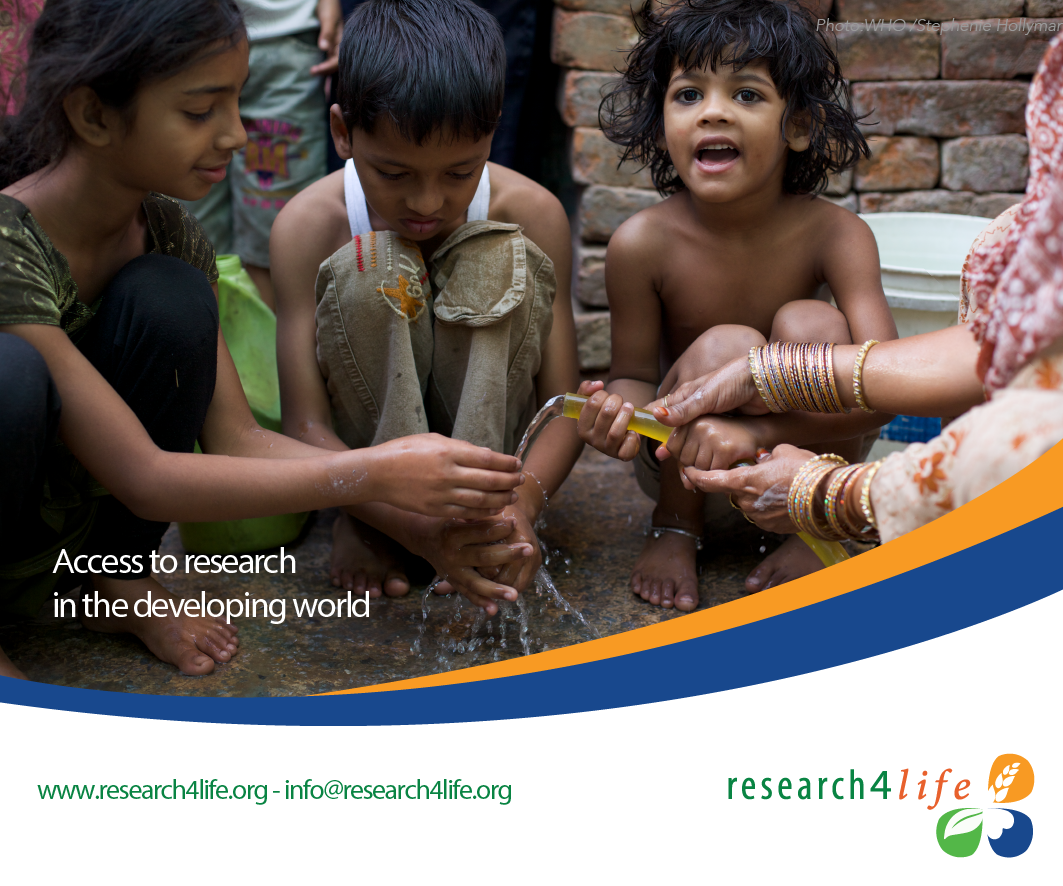 A common technique for organizations or movements seeking to provide a focus for their outreach, awareness, or campaigning work is to designate a specific period of time as a tool with which to bring attention to their goals. Wikipedia probably only scratches the surface with its list of 57 commemorative “months” and rather longer list of 294 commemorative “days”. For those of us in the publishing business, Open Access Week and the recent Peer Review Week feature prominently on our current horizons.
A common technique for organizations or movements seeking to provide a focus for their outreach, awareness, or campaigning work is to designate a specific period of time as a tool with which to bring attention to their goals. Wikipedia probably only scratches the surface with its list of 57 commemorative “months” and rather longer list of 294 commemorative “days”. For those of us in the publishing business, Open Access Week and the recent Peer Review Week feature prominently on our current horizons.
One or two of us in the medical publishing field may well be aware that today (September 28th) is the 9th World Rabies Day, but of probably more widespread relevance to our community is that today sees the launch by UNESCO of its first International Day for Universal Access to Information (IDUAI), a day whose goal must surely resonate with most of us, even if we may have different ideas about how that goal may be best and most sustainably achieved.
The UNESCO Day has been developed with two main aims in mind:
- To put pressure on national governments to acknowledge a legal right to information by adopting Freedom of Information laws, by rejecting the use of secrecy laws that do not meet international standards, by changing the culture of confidentiality common within most governments and civil services which has meant that the right to access official information has often been constrained, and by nurturing a free press, free from the burden of official and informal censorship.
- To encourage all players in the information distribution ecology to exploit to the fullest extent the new information and communication technologies we now have at our disposal to make uptake of the legal right to information as simple and frictionless as possible.
Access to information in the developing world has been a point of particular emphasis for IDUAI. The Day has been officially linked to the United Nations new 2030 Development Agenda, and in particular with Sustainable Development Goal 16 whose 10th target is to “Ensure public access to information and protect fundamental freedoms, in accordance with national legislation and international agreements”. UNESCO has reinforced this developing country focus by specifically endorsing activities which provide access to information for realization of the Sustainable Development Goals, access to information for poor and marginalized communities, and access to Information about global warming issues.
Publishers clearly have an interest in making information as widely available as practically possible. But the IDUAI’s emphasis on the importance of access to information in furthering the UN’s development program resonates particularly strongly with initiatives from the scientific publishing community which over the last 15 or so years have worked to facilitate this access. Kent Anderson refers to some of these in the 95th of his 96 Things Publishers Do.
As publisher co-coordinator for the past five years for one of the initiatives Kent refers to, Research4Life, the public-private research access initiative supported by a partnership of UN agencies, STM publishers, US libraries, and a number of technological partners, I am very aware of the crucial importance of facilitating developing country access to, and effective use of, the output of the global research community. Access to quality peer-reviewed scientific research via Research4Life’s four programs will be an absolutely critical component of strategic endeavors to achieve the UN Sustainable Development Goals, particularly those relating to hunger, good health, education, clean water and sanitation, affordable and clean energy, climate action, and life on land and below water. Research4Life’s core activities represent a vital infrastructural input into the development of evidence based policies and investment priorities that will maximize the chances of the Goals being realized.
So given that the core mission of Research4Life is to to reduce the knowledge gap between industrialized countries and developing countries by providing affordable access to critical scientific research, how big is the gap left to fill? Our current figures show that currently some 8,000 Research4Life registered institutions in 117 developing countries have the kind of breadth of access to peer-reviewed scientific research that is pretty much the equivalent of typical institutions in North America or Europe, and to that extent there is not a big gap to fill.
But are the programs really working? Feedback from our case studies and surveying suggest that they are working for a significant community of developing country researchers, teachers, and practitioners.
For an insight into the practical impact that Research4Life programs have had in the field, a series of Case Studies have been published:
- Making a Difference highlights the benefits for researchers and practitioners in the developing world of the access to scientific research which our programs have provided.
- Unsung Heroes looks at the contribution that librarians have made to facilitating and promoting our programs.
We have now begun a program of revisiting the subjects of the Case Studies featured in the Making a Difference booklet and looking at progress since the study was performed.
Meanwhile for a broader view of the impact of our longest running program, Hinari, we commissioned a more extensive independent online survey of known and potential users of the service, which revealed significant positive impacts of the program for research productivity and patient care.
But of course there are remaining challenges:
- Without training in effective information discovery and use, simply providing access to content will always represent a job only partially done. Research4Life is very active in this area, but there is a far greater demand for training in effectively converting the access we provide into maximum practical benefit than we have the resources to provide. We do what we can on a limited budget as do organizations like INASP with their AuthorAID networking and mentoring program. But we would all like to have the resources to do more.
- There is a significantly greater gap to fill between North and South when it comes to issues like technological infrastructure (especially manifested in often very poor internet bandwidth) and research funding. The latter obviously means that there is a lower level of demand for the research content which we make available, while the former makes effective access and deployment of the research considerably more challenging
These technological and research funding gaps are not really within either the power or the mission of the Research4Life initiative to address. The ecosystem of effective scientific research and its successful application is an ecosystem that flourishes best with more inputs than we alone can provide. The information that we provide access to can only be leveraged to optimum effect if local stakeholders “upstream” of users and librarians are equally supportive, funding the research which provides the rationale for using our content in the first place and investing in the technological and other services which make effective access viable.
So for our latest series of case studies we are working with our colleagues at INASP to discover and publicize situations where developing country users, librarians, or other stakeholder have successfully advocated “upstream” for support for the research enterprise in their particular institution or country. We are looking to identify successful efforts (aimed at institutional administrators or at government policymakers) to make increased resources available, either in the form of funding for the conducting of research, funding for acquiring access to critical journals, books, or databases, or for improving the quality and quantity of the technological infrastructure and equipment provision in their institution. More challengingly we are also looking for examples of how successful advocacy has delivered a more evidence-based local or national government policy (for example in health provision, agricultural practice or environmental or economic policy) based on external research to which users have had access or indeed research which they themselves have carried out.
So far we have gathered some 150 examples of instances where our users have successfully advocated for policies and investments in necessary information support capacity that will maximize the chances that mere access to the content which we provide will be converted to effective transformational access. We are busy assessing them all and will eventually be publishing some of the most notable stories, as we have done with both our end-user and librarian case studies over the last few years. In the meantime, on behalf of all the other stakeholders in the Research4Life partnership, may I issue our profound thanks to our publisher collaborators for giving so generously of their time and content as their contribution to our goal of catalyzing and supporting sustainable development and improved quality of life in the global south.
Discussion
1 Thought on "Guest Post: Research4Life’s Richard Gedye — How Publishers are Quietly (Too Quietly?) Supporting UNESCO’s Universal Access To Information Day"



